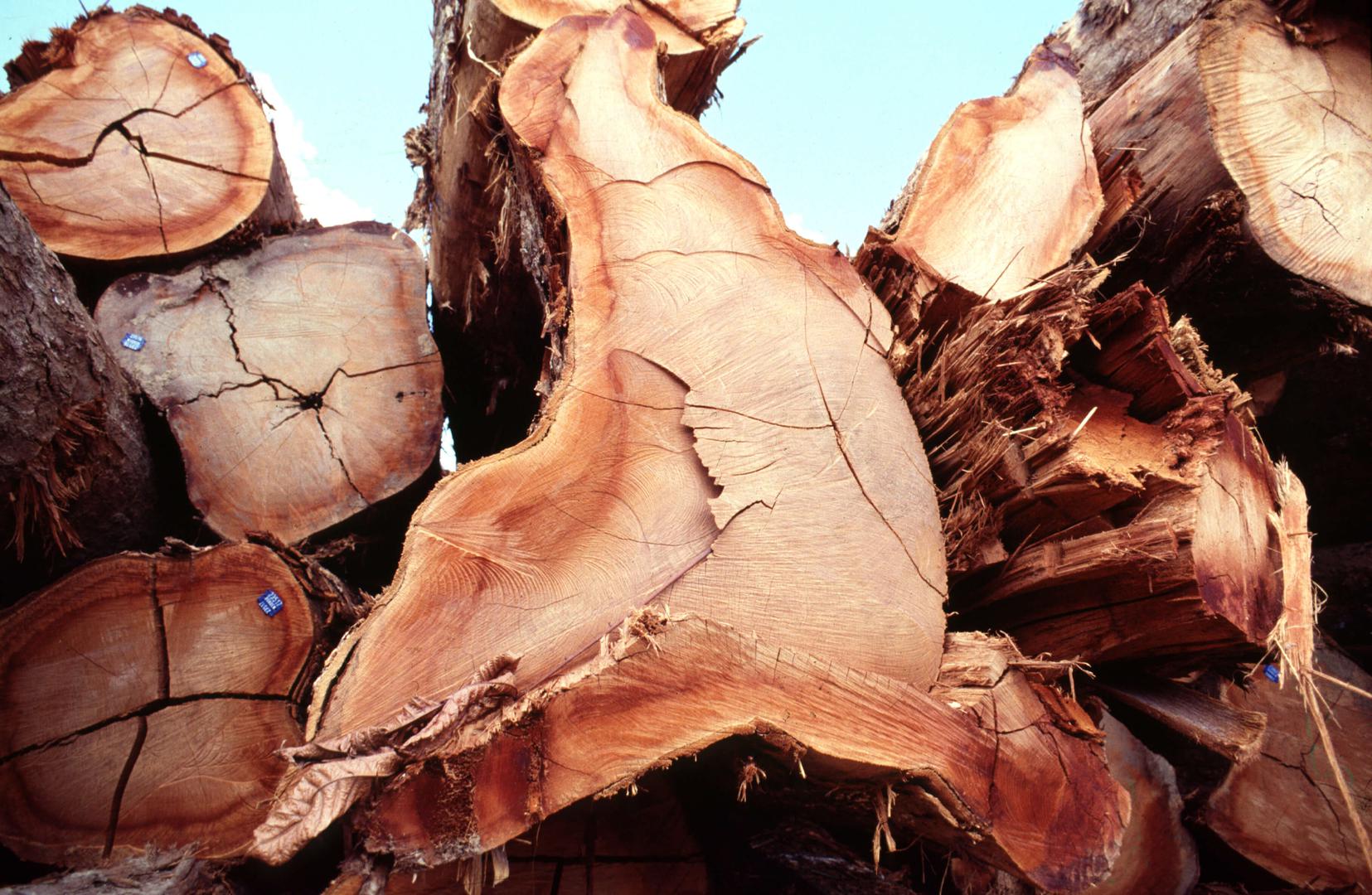Isidro Baldenegro López, a subsistence farmer and leader of the Tarahumara indigenous people in Mexico’s northern Sierra Madre mountain region, knew he was a marked man. The 50-year-old had dedicated his life to defending the Sierra Tarahumara forest and the land that his people had inhabited for centuries—land that illegal loggers, supported by corrupt officials and landowners, had long targeted. Over the years, their pressure had forced the Tarahumara into progressively smaller, more isolated areas. More recently, their death threats had forced Baldenegro and his family from their community. In January 2017, he returned to the forest to visit a relative in Coloradas de la Virgen village; a few hours later, unidentified assailants shot him dead.
Several months earlier, in March 2016, armed intruders battered down the door of the house where Honduran environmental activist Berta Cáceres, 44, was staying and killed her. By then, Cáceres, co-founder of the Council of Popular and Indigenous Organizations of Honduras, had endured years of death threats for activities that included waging a successful grassroots campaign against the Agua Zarca Dam project, a vast complex slated to be built by Chinese state-owned Sinohydro, on land inhabited by the Lenca people.
These are not isolated cases. People the world over are mobilizing to protect the environment against deepening ecological crisis: rampant toxic pollution, climate change, deforestation, biodiversity loss, land degradation, freshwater shortages. As the world’s natural resources face ever greater strain and exploitation, those who defend them against harmful mining, dams, logging, and agribusiness are suffering direct violations of their civil and political human rights.
An increasing number are getting killed: in 2016, at least 200 killings of environmental and land rights activists were documented in 24 countries—mostly in South America—according to Global Witness, the deadliest year on record for environmental activists globally. Nearly 40 percent of those murdered were indigenous. Activists believe that companies or state forces are behind many of the assailants; few are ever arrested or even identified.
The killings of Baldenegro and Cáceres, and many others around the world who fight publicly and forcefully to protect their environments from damage, together with the harmful impact of the deepening ecological crisis, have propelled to the fore the debate surrounding the need to establish global recognition for the right to a healthy environment. They also have thrown into sharp relief the need for accountability and redress for those who suffer most as a result of environmental harm, often women, the poor, marginalized, racial and ethnic minorities, and the young.
In 2017, Human Rights Watch established its Environment and Human Rights Program as part of this effort, aiming to document, expose, and press governments to change policies that result in environmental degradation and impair people’s ability to enjoy their fundamental rights, as well as to underscore, via our research, the real-world implications of the right to a healthy environment.
In signs of international progress, John Knox, the United Nations special rapporteur on human rights and the environment, after five years of intensive work, has helped clarify what international human rights law requires of governments vis-à-vis environmental issues, setting the stage for a fresh debate on global recognition of the right. The Committee on the Rights of the Child is contemplating preparing a General Comment on environmental issues that could recognize the right of the child to a healthy environment as implied in the Convention on the Rights of the Child. And in September 2017, during the UN General Assembly, the French government launched its “Global Pact for the Environment” initiative, which establishes the right to a healthy environment as one of its pillars.
Now, after decades of incubation at national and regional levels, increasing global awareness of the interactions between human rights and the environment, and several positive steps taken in recent years, the international community should build on these advances and push for the global recognition of the right to a healthy environment.
Time for Change
The human right to a healthy environment brings together the environmental dimensions of civil, cultural, economic, political, and social rights, and protects the core elements of the natural environment that enable a life of dignity. Clean water, air, and soils, and diverse ecosystems are indispensable for people to lead lives in which they can enjoy adequate levels of health and security. The right also protects the civic space for individuals to engage in dialogue on environmental policy. Without it, government policies often cater to the commercial interests of the powerful, not the public, and certainly not the politically disenfranchised.
Recognizing and implementing the right to a healthy environment could empower individuals and communities to defend their environment by invoking the right in their struggle for accountability and finding in it new legal arguments and recourse.
Since the UN Conference on the Human Environment in 1972, more than 100 countries have incorporated the right to a healthy environment in their national constitutions, in varying formulations.
The 1989 Convention on the Rights of the Child contains two explicit references to the environment. It links the child’s right to the highest attainable standard of health, including the right to nutritious food and safe drinking water, to issues of environmental pollution. It also defines environmental education as one of the goals of education. The 2013 Minamata Convention on Mercury incorporates elements that recognize there is a right to protection from environmental harm, such as special measures to protect children and women of child-bearing age from exposure. The 2015 Paris Agreement on Climate Change marks the first multilateral environmental agreement to explicitly introduce human rights language.
Certain regional human rights instruments explicitly articulate the right to a healthy environment. For example, the San Salvador Protocol to the American Convention on Human Rights states that, “Everyone shall have the right to live in a healthy environment and to have access to basic public services.” And the African Charter on Human and Peoples’ Rights recognizes the right of peoples to “a general satisfactory environment favorable to their development.”
Since the 1970s, for example, the Ogoni people in Nigeria’s Niger Delta have rallied around the right to a healthy environment in their national and international advocacy against the harmful impacts of oil exploitation on their lands and the abuses perpetrated by the Nigerian military. The Ogoni’s advocacy brought international attention to their cause, empowered their movement, and heralded changes in the conduct of the oil consortium and the Nigerian government. Their advocacy also allowed the African Commission on Human and Peoples’ Rights to spell out what governments must do to comply with the African Charter, including the duty to provide “meaningful opportunities for individuals to be heard and participate in development decisions affecting their communities.”
More recently, in 2004, Beatriz Mendoza, a healthcare worker in Argentina, and 16 others took on the national, provincial, and city governments and charged them with ecological mismanagement of the Matanza Riachuelo Basin, a site of uncontrolled dumping of hazardous material by various industries. The pollution affected millions of people in Buenos Aires province, and for years was deemed an intractable environmental and human rights problem. In July 2008, Argentina’s Supreme Court found in favor of Mendoza based on the right to a healthy environment, which had been added to the Argentine constitution in 1994. The court ordered the government to elaborate and implement a plan for the environmental restoration of the basin, including measures to prevent pollution and a role for monitoring by nongovernmental organizations.
A globally recognized right to a healthy environment should, of course, not be necessary to effectively protect individual environmental activists; assaults against them violate a range of universally recognized human rights, such as freedom of association and expression.
But a globally recognized right to a healthy environment could also anchor the work of environmental defenders—too often stigmatized as anti-development and persecuted—squarely in the legitimacy of the human rights framework. That was indeed the central message of environmental defenders from around the world that met with the special rapporteur on human rights and the environment in Geneva in 2013 to reflect on his mandate.
For example, in 2009 Phyllis Omido in Mombasa, Kenya, led a fight against a smelter that was poisoning her community with lead. Politicians and corporate interests vilified and labeled her as anti-jobs and anti-development in an effort to delegitimize her struggle. Nevertheless, Omido mobilized her community around the right to a healthy environment. It defused the smear campaign against her and strengthened her legal claims in court.
Forging the Link between Human Rights and Environmental Abuses
Human Rights Watch has been establishing a link between human rights and environmental abuses for more than 20 years.
For example, as early as 1992, Human Rights Watch in its “Defending the Earth” report found a link between human rights and environmental abuses global in scope. Almost a decade later, in 2011, our research found that several thousand children in China suffered permanent mental and physical disabilities as a result of lead poisoning. The same year, we reported how the Porgera mine of Canada’s Barrick Gold mining company in Papua New Guinea dumped 14,000 tons of liquid mining waste daily into a nearby river.
In 2012, we documented how lead poisoning killed at least 400 children over two years in Bagega and released a video, “A Heavy Price: Lead Poisoning and Mining in Nigeria’s Zamfara State.” And in 2009 and 2013, we documented how illegal logging and governance failures in Indonesia undermined fundamental human rights and jeopardized the sustainability of forest use and global efforts to combat climate change.
More recently, in 2015, we reported how climate change exacerbated the impacts of development projects in Ethiopia on indigenous peoples in the Turkana region of northwest Kenya, threatening their health and livelihoods. In 2015, we also documented widespread mercury pollution in artisanal gold mines in the Philippines.
And in 2017, we documented how the United Nations’ failure to compensate victims of widespread lead poisoning in UN-run camps in Kosovo left affected families struggling to care for sick relatives exposed to the contamination. Many of those affected, including children, experienced a myriad of health problems, including seizures, kidney disease, and memory loss—all common long-term effects of lead poisoning.
Seizing Opportunities
The work of John Knox, the special rapporteur on human rights and environment, has set the stage for a renewed debate on the right to a healthy environment that should lead the UN Human Rights Council or the General Assembly to formally proclaim the right.
As his term ends early in 2018, the special rapporteur is preparing a synthesis of human rights obligations with respect to a healthy and sustainable environment that he suggests can be accurately described under the rubric of the right to a healthy environment.
A fresh debate on the right to a healthy environment would bring to sharper focus the urgent need for new and robust legal tools to empower communities and civil society groups to confront the local and global manifestations of the global environmental crisis. It would underline the need to tackle threats and attacks against environmental human rights defenders. It would increase appreciation of how humans are not isolated from, but depend on, the environment. It would amplify human awareness on the interrelatedness of the web of life. And it would highlight the right’s potential to address and redress the grave inequities suffered by individuals and communities exposed to environmental degradation and the unsustainable extraction of natural resources.
Another window of opportunity is the “Global Pact for the Environment,” launched at the General Assembly by the French government. With the support of like-minded states cutting through East-West and North-South divides, President Emmanuel Macron has encouraged the world to build on the success of the Paris Agreement on Climate Change and, with the Global Pact, transform societies by holding states accountable for flouting the environmental rights of a group or individual.
Much as the two international human rights covenants from 1966 codified the Universal Declaration of Human Rights, the Global Pact is an attempt to codify the environmental rights and principles laid out in the seminal 1972 Stockholm Declaration on the Human Environment and the 1992 Rio Declaration on Environment and Development. The Global Pact would thus become a third international covenant focused on environmental rights.
A preliminary draft of the pact released by the French proclaims the right to an ecologically sound environment, in which “[e]very person has the right to live in an ecologically sound environment adequate for their health, well-being, dignity, culture and fulfilment.” The French expect the General Assembly to commence negotiations on the Global Pact early in 2018, with a view to concluding them by 2020.
The continued ecological viability of our planet has been placed into question by scientists worldwide. Civil society organizations have consistently voiced the need for a change in paradigm to preserve the earth’s capability to sustain life, to restore degraded ecosystems, and to foster a balanced interaction between humans and nature.
The right to a healthy environment brings together all that humanity has learned on how human rights and the environment interact. It encompasses the environmental dimensions of the rights to life, health, food, water, sanitation, property, private life, culture, and non-discrimination, among others. It will give those exposed to mercury in artisanal gold mines in the Philippines, those poisoned by soot in Piquiá de Baixo in northeastern Brazil, those contaminated by lead in Kosovo, as well as activists attacked for defending their environment and lands tools and political leverage to defend their rights.
As our generation faces serious environmental and social crisis, the potential of the right to a healthy environment for progressive development and accountability cannot be understated. Its global recognition is long overdue.





